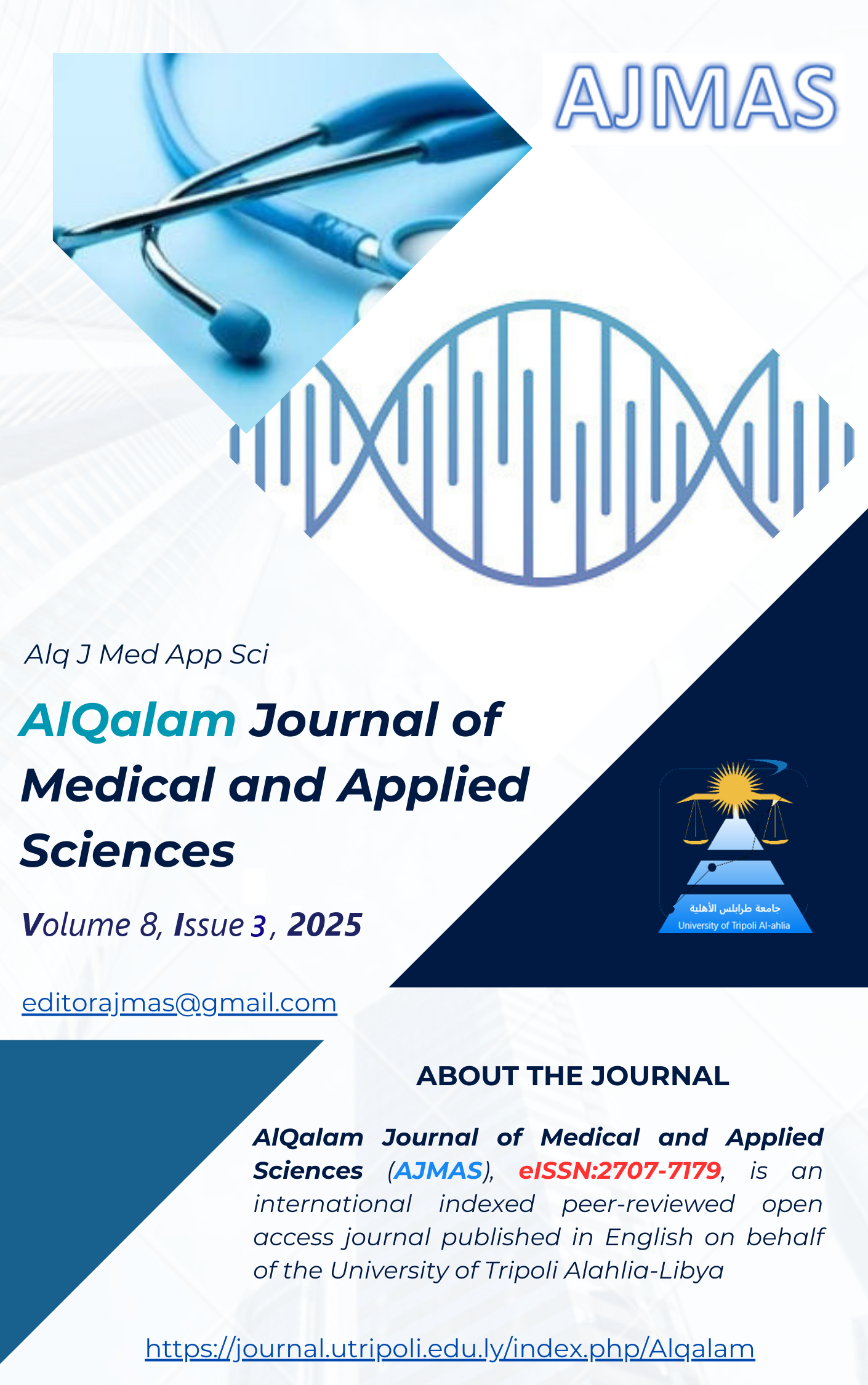Glycemic Control Among Type 2 Diabetic Patients in Misurata, Libya
DOI:
https://doi.org/10.54361/ajmas.2583107Keywords:
Glycemic Control, Type 2 Diabetic Patients, Misurata, Libya.Abstract
Achieving an HbA1c level of less than 7% is the most important target in the management of diabetes mellitus. This study aimed to assess the glycemic control in ambulatory diabetic patients in Misurata, Libya, and the factors affecting the glycemic control in those patients. The study also aimed to describe the drugs used in the management of diabetic patients and the factors that influence the selection. A cross-sectional study was conducted on ambulatory diabetic patients in Misurata. Data were collected by reviewing the patients’ medical records and conducting interviews with the patients themselves. Data were analyzed by IBM SPSS Statistical version 27. A p-value of less than 0.05 was considered statistically significant. During the study period, 193 patients, predominantly females (73.6%), were included. Metformin, insulin, sulfonylureas, and DPP4 inhibitors were the most prescribed drugs. Use of metformin and sulfonylureas was significantly higher among patients with a diabetic duration of less than 5 years, whereas the use of insulin was significantly higher among patients with a diabetic duration of more than 5 years. Creatinine clearance was significantly higher among patients who used metformin, sulfonylureas, or DPP4 inhibitors compared to those patients who didn’t use these drugs. The median (IQR) of HbA1c in this study was 7.8 (2.05) %, and only 23.9 % of the patients achieved the target HbA1c level of < 7%. Poor glycemic control was significantly associated with diabetic duration of > 5 years and the use of insulin.
Downloads
Published
How to Cite
Issue
Section
License
Copyright (c) 2025 Abdallah Mahjoub, Khawla Hriba, Safaa Farhat

This work is licensed under a Creative Commons Attribution 4.0 International License.














